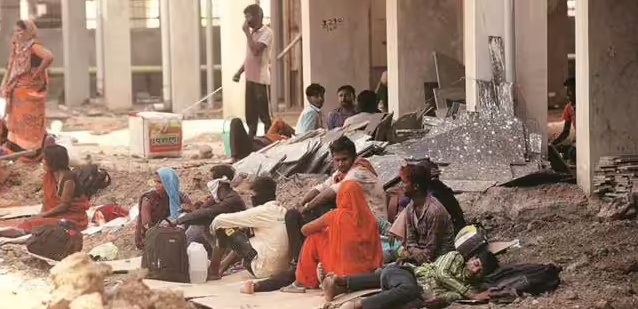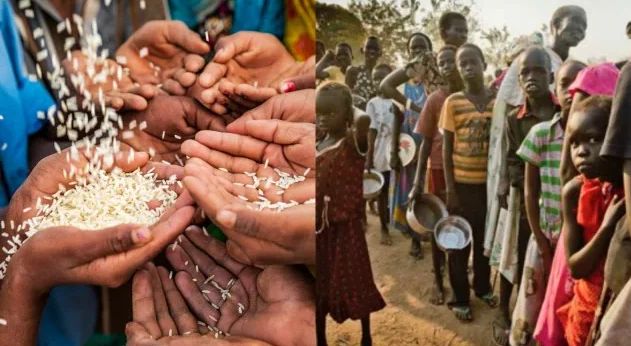Top 10 Countries Worst Hit by the Global Hunger Crisis—Where Does India Stand?
Global Hunger Index 2024: Understanding the Impact of Food Insecurity
In 2024, the world continues to grapple with a severe food crisis that affects millions of people across various nations. Despite the progress in technology and agricultural innovations, hunger remains a persistent issue. The Global Hunger Index (GHI) 2024 has highlighted the severity of the crisis, showing that hunger is more than just a lack of food; it’s about the accessibility, diversity, affordability, nutrition, and safety of food. These factors collectively determine a nation’s food security.
The Importance of Food as a Basic Human Right
Food is recognized as the world’s third most basic human right, following air and water. Everyone deserves the right to access adequate nutrition to lead a healthy and fulfilling life. Yet, despite global food production being sufficient to feed the entire population, millions still go to bed hungry every night. This paradox of plenty is one of the greatest challenges of our time, with hunger rates rising to alarming levels due to various factors.
Causes of the Global Food Crisis
Several factors have contributed to the escalating global food crisis in recent years. The COVID-19 pandemic played a significant role in disrupting food supply chains, leading to economic downturns and increasing unemployment rates worldwide. Geopolitical conflicts, such as wars and regional disputes, have further exacerbated the situation by causing displacement and limiting agricultural productivity in affected areas.
The economic instability brought about by inflation and rising fuel prices has made it increasingly difficult for many families to afford basic food supplies. Additionally, the climate crisis has resulted in erratic weather patterns, including droughts, floods, and other natural disasters that have negatively impacted crop yields and livestock production. These issues have collectively driven up the cost of food, pushing more people into extreme poverty and hunger.
The State of Food Security in 2024: Shocking Statistics
According to the United Nations World Food Programme (UN WFP), around 350 million people globally are currently experiencing the most extreme conditions of hunger. Out of this staggering number, approximately 49 million individuals are on the brink of famine. The Food and Agriculture Organization (FAO) has reported that over 820 million people suffer from chronic undernourishment. Tragically, this crisis affects women and children the most, with about 60% of those suffering from chronic hunger being women. Additionally, nearly five million children under the age of five die from malnutrition-related causes each year.
World Food Day: A Global Call to End Hunger
To raise awareness about the urgent need to address hunger and malnutrition, the FAO observes World Food Day every year on October 16. This day also commemorates the founding of the FAO in 1945, serving as a reminder of the continuous fight against global hunger. Despite global efforts to combat this issue, the progress has been slow, with many countries witnessing a resurgence of hunger levels due to economic, social, and environmental challenges.
Top 10 Countries Worst Hit by the Global Hunger Crisis in 2024
Based on the findings of the Global Hunger Index 2024, the following countries have been identified as the most affected by hunger. These nations have experienced severe food insecurity due to a combination of political instability, economic hardship, and environmental factors:
- Yemen: Conflict and political turmoil have devastated Yemen, leaving its population with little access to food and basic necessities.
- Chad: This African nation continues to struggle with extreme food shortages, mainly due to droughts, limited agricultural infrastructure, and socio-economic instability.
- Central African Republic: Civil unrest and lack of access to agricultural resources have led to widespread hunger and malnutrition.
- Madagascar: Severe droughts caused by climate change have significantly affected Madagascar’s food production, threatening the livelihoods of its people.
- Democratic Republic of Congo: Ongoing conflicts have displaced millions of people, severely impacting food availability and increasing hunger rates.
- Haiti: Political instability and frequent natural disasters have made Haiti one of the most food-insecure countries in the world.
- Niger: Recurrent droughts and poor soil quality have resulted in low agricultural productivity, leading to widespread food shortages.
- Sudan: Prolonged political conflicts and economic challenges have disrupted Sudan’s food supply chains, increasing hunger and malnutrition.
- South Sudan: Years of conflict and displacement have led to extreme hunger conditions in South Sudan, with many people dependent on humanitarian aid.
- Afghanistan: The combination of political instability, economic collapse, and poor agricultural conditions has left millions in Afghanistan facing severe food insecurity.
India’s Position in the Global Hunger Index 2024
India’s ranking in the Global Hunger Index 2024 stands at 105th out of the 127 countries assessed, which places it in the “serious” category. Despite being one of the world’s largest producers of food, India still faces significant challenges in terms of food distribution and accessibility. Here are some concerning statistics from the report that highlight the state of hunger in India:
- Undernourishment: 13.7% of India’s population is undernourished, indicating that a significant portion of the population does not have access to sufficient food.
- Child Stunting: 35.5% of children under the age of five in India are stunted, reflecting chronic malnutrition and poor living conditions.
- Child Wasting: 18.7% of children experience wasting, which indicates acute undernutrition and inadequate intake of essential nutrients.
- Child Mortality: 2.9% of children in India do not survive beyond their fifth birthday, largely due to malnutrition-related issues.
These figures show that while India has made some progress in addressing hunger and malnutrition since 2000, when it was categorized as “alarming,” there is still a long journey ahead. The country’s current score of 27.3 in the GHI points to the need for more targeted interventions to address food insecurity and improve the health of its population.
Also Read: Premier Houston Semi Truck Accident Attorney
Structural Inequalities: A Barrier to Progress
One of the key findings of the GHI 2024 is that structural inequalities continue to exacerbate hunger in the world’s poorest countries. Economic disparity, lack of access to healthcare, and insufficient social safety nets are major barriers that prevent equitable food distribution. As a result, the most vulnerable communities, including women and children, bear the brunt of the crisis.
The Way Forward: Addressing Global Hunger Holistically
Solving the global hunger crisis requires a comprehensive approach that addresses its root causes. Governments, international organizations, NGOs, and local communities must work together to create sustainable solutions. Key focus areas include improving agricultural practices, enhancing food distribution networks, building resilience to climate change, and ensuring that social protection systems reach those most in need.
Education and awareness campaigns are also crucial to empower communities with knowledge about nutrition, healthy food practices, and the importance of sustainable agricultural techniques. Only by tackling these issues holistically can we hope to build a world where everyone has access to nutritious food and the opportunity to lead a healthy life.
Conclusion
The Global Hunger Index 2024 highlights the ongoing struggle faced by millions worldwide in accessing adequate food. While significant strides have been made, the persistence of hunger in many countries, including India, points to the need for renewed global efforts. Addressing hunger is not just about producing more food; it’s about creating a more just and equitable food system where every individual’s right to nutrition is recognized and fulfilled. The fight against hunger is far from over, and it will require collective action, commitment, and innovative solutions to overcome this global challenge.


